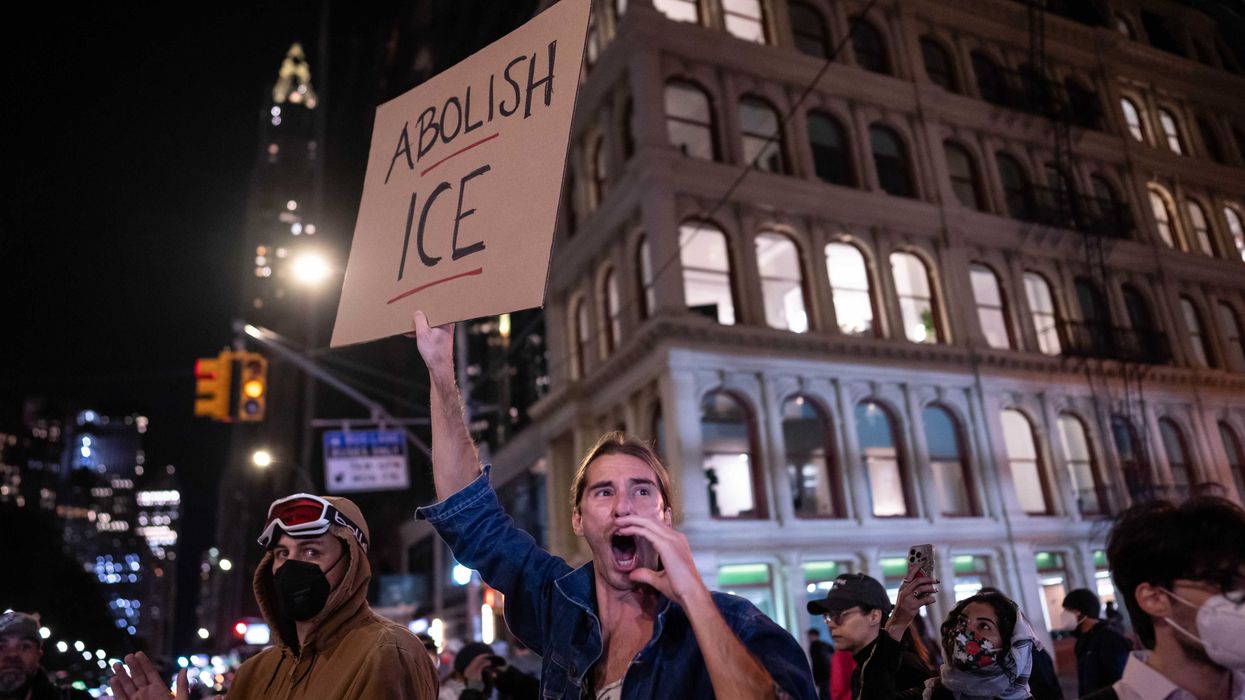GLENN: We just had some really critical information that we should pass on to you.
STU: We hate to disappoint the audience, but sometimes people are disappointed. This one comes in from Twitter @worldofStu.
I was disappointed Jeffy didn't go cover the storm. He went blow away in high winds, and he's very buoyant in case of flooding.
I could have used him. Where were you at, man? Come on.
PAT: Isn't that good? That's good.
GLENN: Jason went out, who is a head writer or researcher for the Glenn Beck Program. And we're glad to have you back safe and sound. You and Sean went out yesterday.
You -- you couldn't actually get close to anything because you were dumb enough to drive a car -- who even has a car in Texas that is headed towards Houston?
JASON: Yeah. So we rented a very high-mobility Hyundai that --
GLENN: Yeah. Right. Yeah. Yeah.
JASON: So we didn't expect to actually have to actually maneuver when we got down there in this Hyundai. We were going to jump into the vehicles with the rescue group that we were with.
GLENN: Yes.
JASON: But they had full-on boat crews. They had tons of gear. All this stuff. So like at the last minute, they were like, "Guys, follow this convoy down to the actual boat put-in area, and you can just follow us down there." So were like, okay. You know, we'll try. We got -- so we started going down towards Katy, Texas, which was the hardest hit area at that time yesterday.
PAT: Wait. Katy was the hardest hit area?
GLENN: Yeah. You didn't hear this?
JASON: At that point, yeah. So they pulled up a map that morning. And they were like, these are all the areas. Some program they were using of all the people throwing --
PAT: Wow. That's where I lived.
JASON: Was it really? Oh, my gosh.
PAT: Uh-huh.
GLENN: It's a huge suburb -- it is the main suburb -- if you work in Houston, it's the main suburb. And it's fairly -- it's not like hoity-toity. But it's affluent.
PAT: Parts of it are very nice.
GLENN: Yeah, parts of it are very nice.
PAT: Uh-huh.
JASON: The feeling driving down there was kind of hard to describe. What kept going through my head was watching Independence Day or, you know, like an alien invasion movie.
GLENN: Yeah. Yeah.
JASON: Because there were tons of people coming pout. There were only rescue vehicles and like police and stuff like that going in. All the radio stations, most of the radio stations were tuned to the emergency broadcast thing.
GLENN: System, yeah.
JASON: So you're seeing that.
PAT: Wow.
JASON: So as you're driving down, you can actually see -- we would get to a certain area, after we broke apart from the main group. And we were trying to work our way through the back roads. We would get to a certain area. And then all of a sudden, you would see, you know, all the way up to the houses, all the way to the front doors, you know, the water's creeping in. The waters were sweeping over it -- like, you could just see the tops of trucks that had just gotten stranded in some of these intersections. You could not move.
GLENN: So, Jason, as you were going down there, you know, the big controversy over the weekend was, the city and the state had an argument, evacuate, evacuate, evacuate.
The argument from the city was not, no, we shouldn't evacuate because it might cause more problems. It was, no, I don't know if we need to do it yet, if I'm not mistaken. Kind of the same thing that happened in New Orleans.
However, that may have turned out to be a great blessing. Because you would have had probably a million people trapped in their cars on these highways. And -- and nowhere to go. That's what happened, you know, in -- in all evacuations. And the last time it happened in Houston, people were stuck in traffic. They ran out of gas. And families were trapped in their cars.
Now, imagine, five, six, seven, eight, some places, 12 feet of water. Would that have been much worse, do you think?
JASON: Oh, my gosh, yes. I think -- to go off that point, I think they were doing it right. It seemed like it was efficient the way they were doing it. They had two stages, as we were listening to the emergency broadcast.
There was the -- there was the suggested evacuation, saying that, okay. In these areas, water level is rising. We suggest you evacuate. But it wasn't mandatory.
The places that were dire, those were under mandatory evacuation. So it was going in like stages. So you could -- there were certain areas that you had to get out in mandatory evacuation. They would leave. So those were the people we were seeing cruising down the freeway or getting out of there.
But it was managed. The other places that we suggest you evacuate, that was actually kind of surreal. And you can see how people actually -- you wonder -- you know, when you see these news broadcasts, how these people -- why did they stay in their homes? Like, how did it get to this point?
I could actually get that now. Because you go into some of these villages on the outskirts of Katy. And you've seen these neighborhoods, Pat. They're just like our neighborhoods, like the neighborhood I live in. There are people that are walking their dogs down the sidewalk. They're looking at the waters rise. You know, and there's kids, you know, building little toys and that's going into it. They didn't feel threatened at the time, while water is gradually, gradually rising.
But I can sympathize with them. Because I'm like, well, if it's not really -- if it's not coming up to my door, I'm probably not leaving either. Because I have all my stuff in here.
PAT: We went through many storms and several hurricanes and never flooded in Katy. So especially Katy residents would probably be like, well, that's not going to happen here.
GLENN: So I was just talking to a guy about -- because I can't take the tornadoes here anymore. I just can't. It freaks my children out. And so I want to build a storm shelter. And I want to build a storm shelter also for the library that I have. I don't want it sucked up into the sky.
And so I'm talking to this guy. And he said, "You know, don't build the -- where do you want to build it?" I said, "I don't know where we could go." And he said, "Well, I suggest you build it in your garage." And I said, "Well, wait. Why?"
And he said, "Because if you build it where you have to go outside -- think of this, usually it will be in the middle of the night. And you'll have to get everybody up. And you'll have to go outside, get dressed. It will be raining. Blah, blah, blah. And then nothing will happen, and then you'll get wet coming back in, and then you'll all go to bed. And what will happen, one or two storms down the road, you'll say to the kids, "You know what, let's just stay here in bed. And we'll all go if it gets bad." And then you're sucked up into the sky.
And the same thing happens here with these hurricanes is you've gone through them over and over again. Nothing happens. And you're not seeing -- it doesn't connect with you that that's going to happen to you or your neighborhood.
And then all of a sudden -- you were driving yesterday, and you would drive down the streets. And you were trying to get places. And by the time you went, "Okay. Well, that's blocked," you'd turn around, and you would realize, "I'm trapped. I can't get out now."
JASON: That was the most claustrophobic feeling, and that's what the rescuers are having to put up with this too. I had never heard of this, in some of these situations.
Because usually it's like, after the fact, the waters had risen. They pretty much leveled off, and then rescue workers go in. It's still rising, even up to this day. So as we were getting to certain points, water was rising behind us. So we were like, well, how the heck do we get out of here. At one point, we just stopped beside the road and scratched our heads and said, "We might be stuck out here for a night."
Like, this car is getting swept away. You know, one of the coolest on that -- that little conundrum of trying to get out, I saw one of the coolest things I saw out there.
So we got to a certain point, just before we had to evacuate and get out of there, to where we got to a point to where we were going to try to turn around. The water level was rising about halfway up under one of the homes.
And you saw a long line of cars. People were just pulling up into people driveways. It's like, why are all these cars pulled into people's driveways and yards?
Well, what it was, was that was kind of like the point of no return. All the neighborhood -- the people and the residents of these homes, they were driving up, basically metaphorically to the fire. Whatever they had, they had blow-up boats, they had floaties, they had canoes. And they were like, this way.
And they were going right up there, and they were throwing in their own, and they were going to help out their neighbors. I got chills seeing that. I wanted to stay there and watch. But, again, we would have gotten swept up with it too. But that's what they were willing to do for their neighbors. It was amazing.
GLENN: Right. And they were driving their car. And everybody was walking away, going, my car is lost. It's just like -- that's not going to -- I'm never going to see that again.
JASON: Yeah. Yeah.
GLENN: It's really remarkable. Jason, thank you so much. Appreciate it.
JEFFY: I mean, the company that rented Jason's car, he didn't care.
(laughter)
STU: That's a fair point.
JEFFY: Thanks, Glenn.

 AASHISH KIPHAYET / Contributor | Getty Images
AASHISH KIPHAYET / Contributor | Getty Images
 Harold M. Lambert / Contributor | Getty Images
Harold M. Lambert / Contributor | Getty Images Adam Gray / Stringer | Getty Images
Adam Gray / Stringer | Getty Images Anadolu / Contributor | Getty Images
Anadolu / Contributor | Getty Images